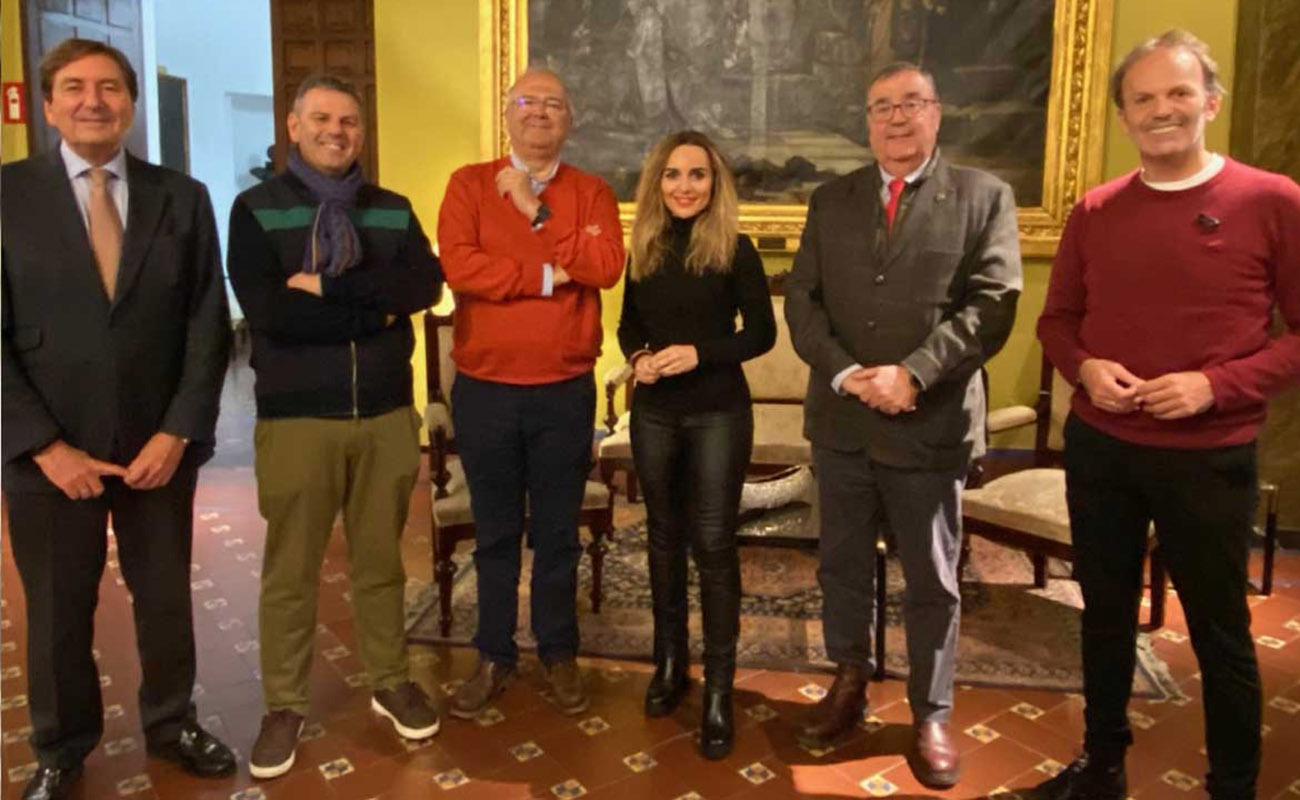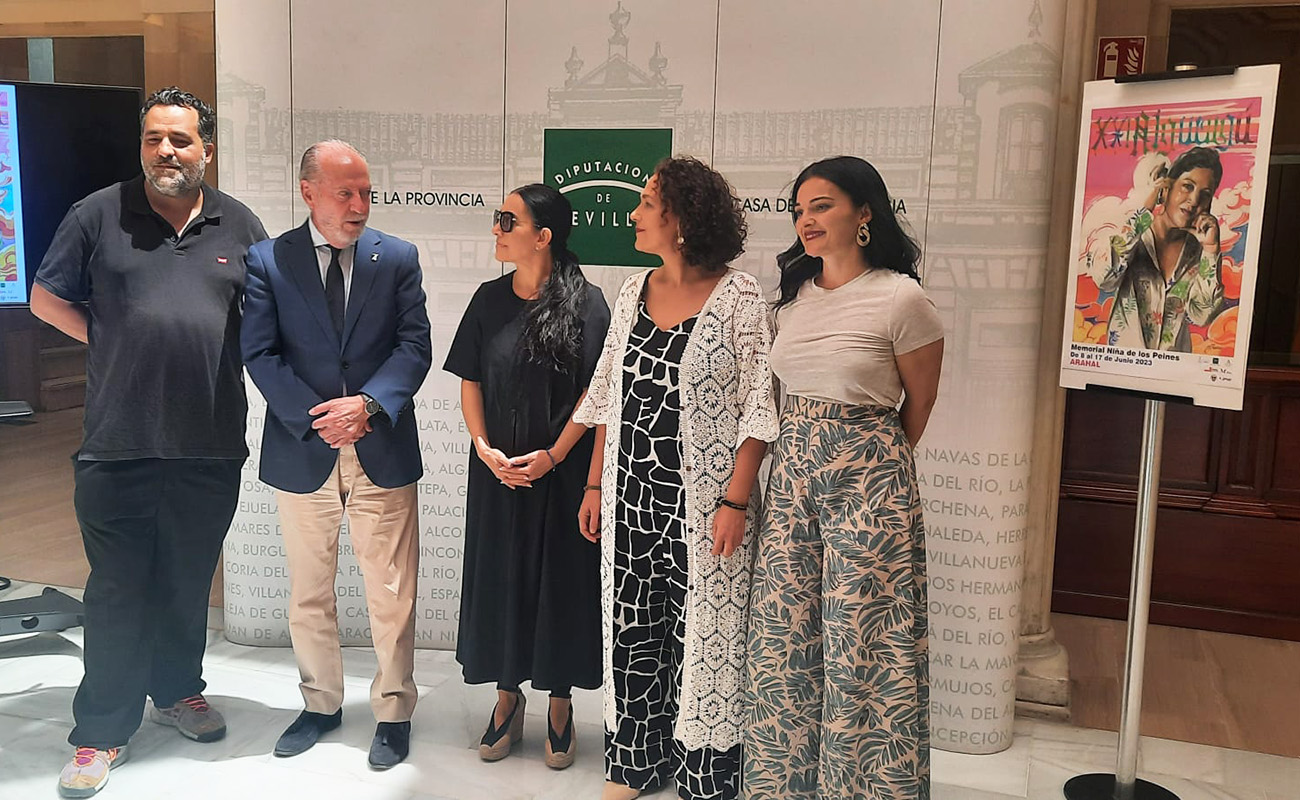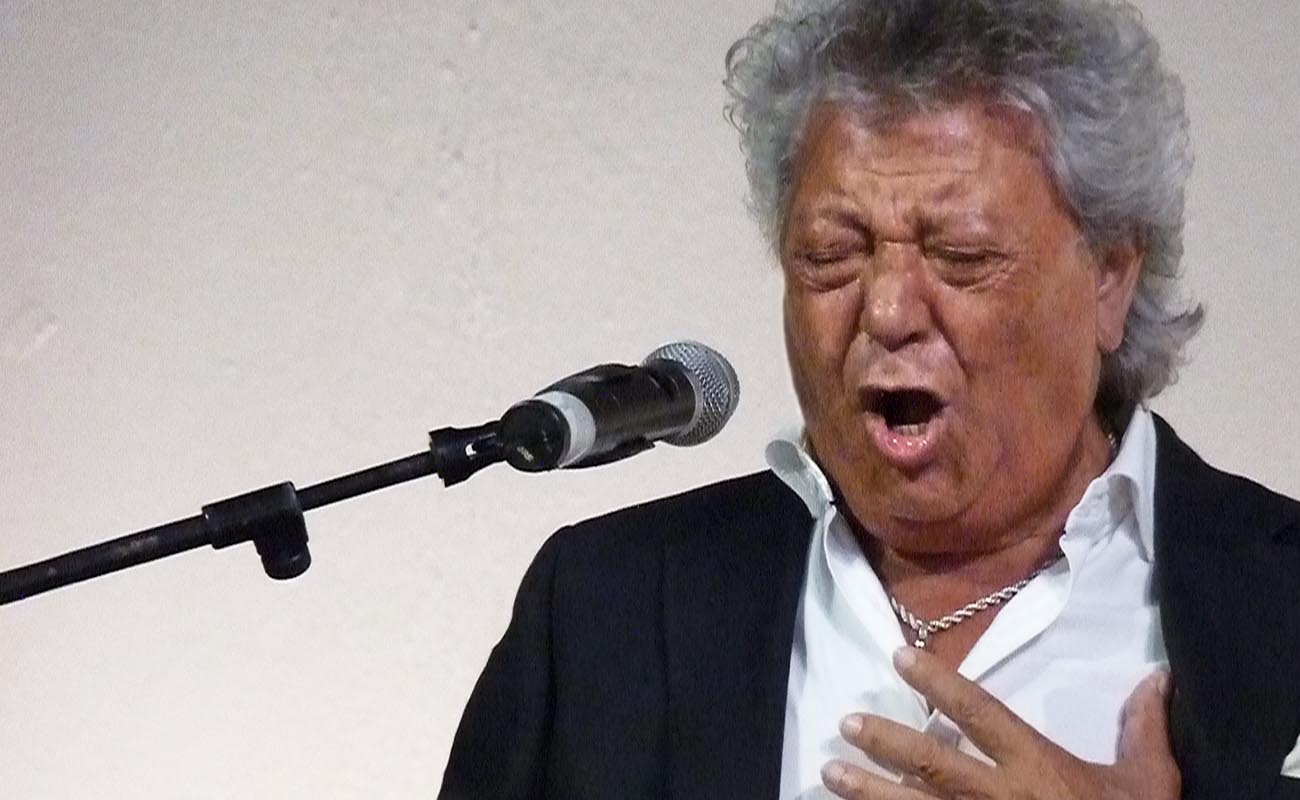Niña de los Peines on the Big Screen
Tesela Producciones presented in Seville’s Cajasol Theater the documentary ‘Mujer, gitana y reina del cante’ (‘Woman, Gypsy and Queen of Cante’). A wonderful story about the life and career of the celebrated cantaora Pastora Pavón Cruz, a.k.a. ‘Niña de los Peines”, the most influential cantaora in flamenco’s history.
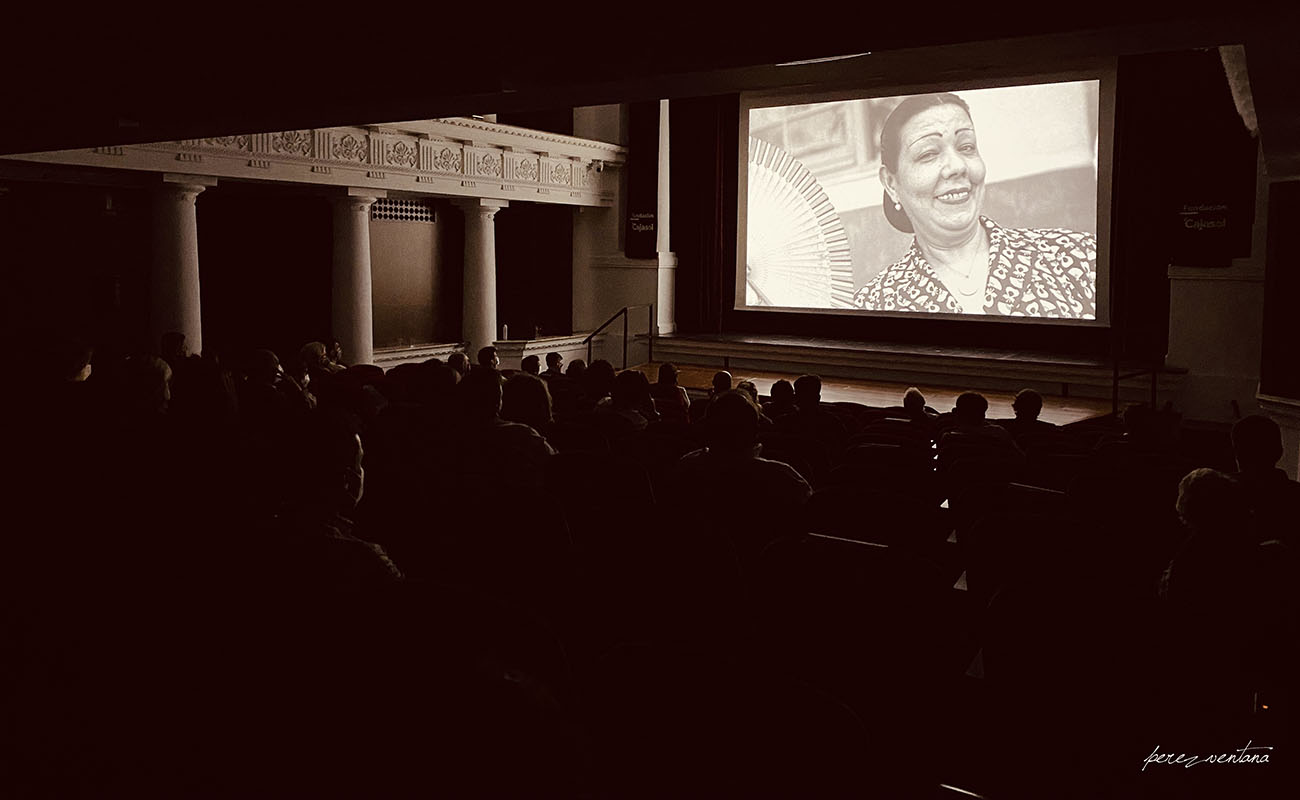
Last Thursday, May 6th, was a very important day for flamenco, because Seville’s Cajasol Theater, in the city center, finally hosted Tesela‘s presentation of the documentary Mujer, gitana y reina del cante, (‘Woman, Gypsy and Queen of Cante’), about the life and career of the celebrated cantaora Pastora Pavón Cruz, Niña de los Peines, without a doubt the most influential and renowned cantaora in flamenco’s history.
The screening of the 90-minute documentary took place with a limited audience of about eighty people, attended by Susana Cayuelas — territorial deputy of Seville’s department of Development, Culture and Heritage — and by flamenco aficionados and critics. Directed by Pedro Callejas, it features renowned critics, flamencologists, aficionados and artists showering praises on this great artist born on February 10th, 1890 in Seville’s San Roman district to a humble family with roots in other provincial towns such as El Viso del Alcor and Arahal.
«The documentary features the commentaries of renowned artists and experts on Niña de los Peines, as well as an extensive graphic material. »
Among other celebrated individuals, this superbly well-researched and masterfully done documentary features the commentaries of the poet Antonio Murciano, cantaoras Carmen Linares, Esperanza Fernández, Mayte Martín, Salomé Pavón and Rosario la Tremendita, masters Fosforito and Manolo Sanlúcar, young cantaor Israel Fernández, author Cristina Cruces, writer and musicologist Faustino Núñez, lawyer and researcher Luis Suárez Ávila, vintage records expert Carlos Martín Ballester and flamenco critic Manuel Bohórquez, the documentary’s advisor and ExpoFlamenco director.
A child prodigy of cante, Pastora Pavón started performing in the early 1900s with such success that soon she was mingling with the greatest flamenco stars of those years, such as Trini de Málaga, Chacón, Manuel Torres, Manuel Vallejo, Juanaca de Málaga, Macarrona and guitarist Niño Ricardo. She first recorded in 1909, accompanied by the guitar of Ramón Montoya, and from then on, her career was unstoppable. She performed in virtually all of Spain’s theaters, and her success was echoed by every newspaper in the country.
Never before had the written press covered so much and so well a flamenco artist. Yet, in the making of the documentary, the producers were not able to find any live footage of this cantaora, because she was famously camera-shy, avoiding film and radio studios alike. Fortunately, she at least allowed herself to be photographed, as can be attested by the documentary’s extensive graphic material.
Canal Sur Televisión collaborated with this documentary and will broadcast it at a yet-to-be-determined date. Besides Seville, the presentation of this film will also take place in Madrid, Málaga, Barcelona and Arahal, the birthplace of her mother and older brother, cantaor Arturo Pavón Cruz, father of pianist Arturo Pavón Sánchez.
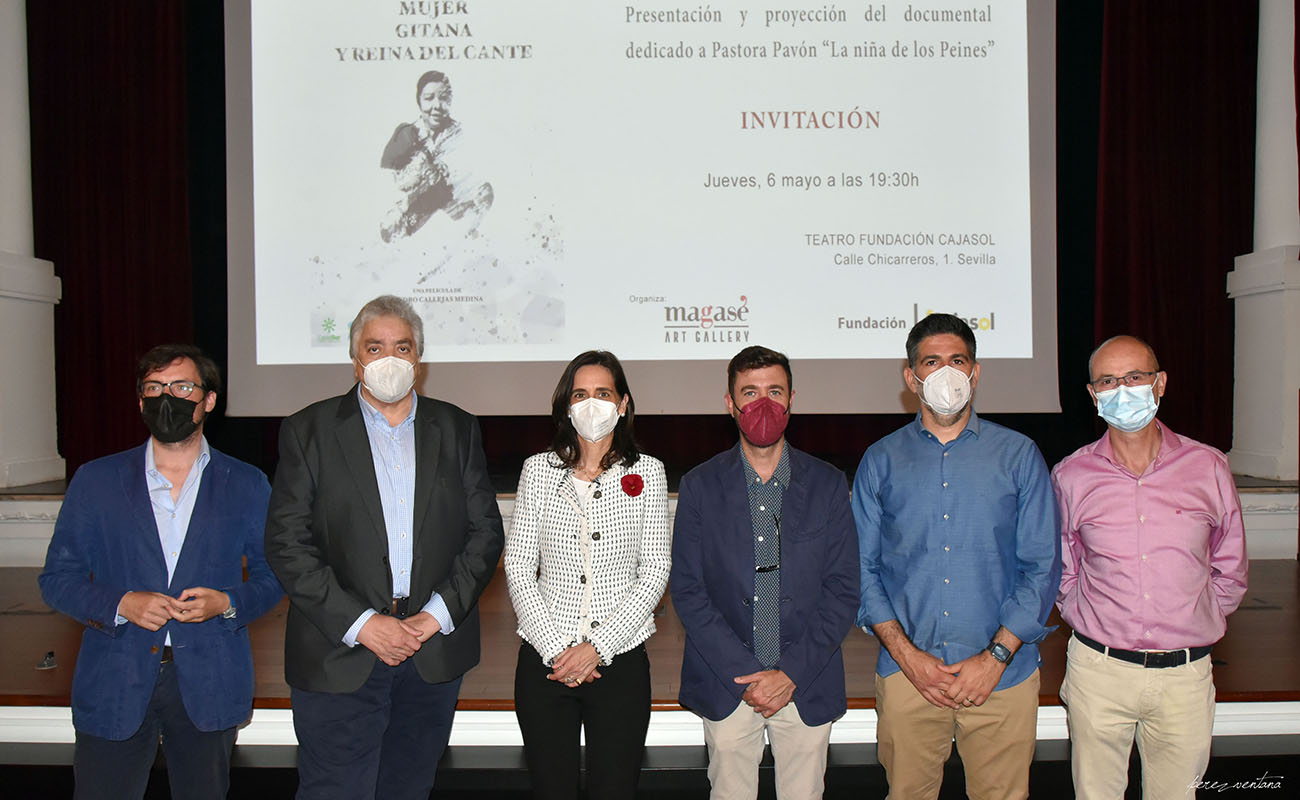
Presentation of the documentary ‘Mujer, gitana y reina del cante’ at Seville’s Cajasol Theater. From left to right: Juan Antonio Navarro (director of photography), Manuel Bohórquez (advisor), Susana Cayuelas (territorial deputy of Development, Culture and Heritage, Junta de Sevilla), Pedro Callejas (director), M. Rogelio Gordo (executive producer) and Fernando Mañes (Magasé Art Gallery). Photo: perezventana


